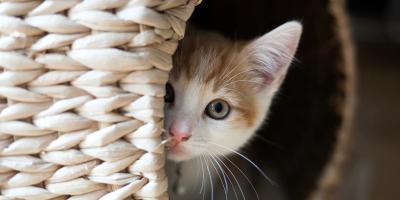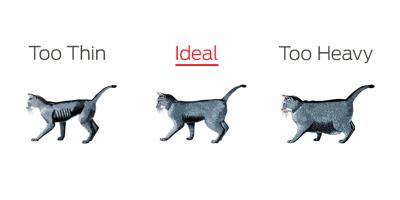
You may have noticed that your cat has certain behaviours and preferences in your home. These behaviours stretch back generations to their time living in the wild. These preferences can also run counter to how we live our day-to-day lives, particularly when it comes to our home environments. So, how can you make sure that you and your cat are on the same page? Read on for six ways to make your cat feel more comfortable in your home:
1. Perches
In nature, you’ll often find cats in trees, hiding from predators and getting the right vantage point to survey their territory and to hunt. But, how can you recreate this in an indoor environment?
In reality, you may already have furniture or architectural features in your home that mimic trees. For instance, a tall bookcase, wall shelves and even the back of your sofa can serve the same purpose as a tree in the wild.
If you don’t have tall furniture, or simply want to give your cat other outlets for climbing, you can purchase cat trees or cat clouds. These structures are designed specifically for felines and their instinct to climb.
By providing perches throughout your home, your cat can show off their natural agility and grace getting up and down. Plus, it can bring them a sense of comfort by getting off the floor.
2. Connecting to the Outdoors
Because of the dangers associated with cars, exposure to disease from prey, and conflicts with wild or domestic animals, we don't condone outdoor cats. That's not to say indoor cats must be sealed off completely from the outside world.
Beyond supervised outdoor activities like leash walking, it's important to provide your cat with a place to interact with his or her surroundings. This can be through a window or door, even a screen porch. It's healthy for your cat to see and hear birds and other wildlife, to see people and pets in the neighbourhood and to smell new smells.
3. Hideouts
While roaming their home territory, it’s quite common for cats in nature to hide in abandoned burrows or hide behind a canopy of foliage.
You can create hideouts with simple at-home materials. For instance, you can drape a blanket or towel over a table to create a fort, or you can place a basket upside-down on a bottom shelf or edge of a coffee table to create a cave.
There are also many options at the pet store to help satisfy your cat’s desire for concealment. There are play tunnels that are made of insulated fabric that can double as a bed as well as indoor cat houses made out of fabric.
4. Scratching Posts
In nature, cats use both standing and fallen trees for scratching. This helps keep their claws fit for hunting, climbing and self-defence.
While scratching is in your cat’s nature, you may not want them expressing this instinct all over your furniture, pillows or rug. A sturdy scratching post or horizontal surfaces can be used to satisfy your cat’s need to scratch. These can be made from corrugated cardboard, carpets or natural rope fibres.
5. Feeding
Your cat’s whiskers are sensitive and are used for navigating, communicating, and measuring the width of openings. As such, a dish that has high sides that cause your cat’s whiskers to bend can be irritating. When choosing a dish for feeding your cat, opt for a shallow dish with short sides. This way, your cat can reach their food without touching his or her whiskers.
As for the placement of your dish, it’s important to understand the pressures of feeding in the wild. In the wild, cats are active hunters who know the value of a meal, so they stay alert for rivals that may come in and try to steal their food. Additionally, cats are quite vulnerable when they are eating, so it’s understandable as to why they may be a bit jumpy during mealtime.
When choosing a spot for your pet’s dish, rather than placing it in the corner, try putting it out more in the open. This gives your cat a clear view of the space around them along with giving them more options to “escape” – both of which appeal to your cat’s instincts.
6. Litter Box
Sometimes, cats in nature want their presence to be known. Other times, they prefer to keep it hidden. But the fact is, every time a cat goes to the bathroom, they leave a trail of scent that can serve as a means of communication. So it's not uncommon for them to relieve themselves in different locations, and reserve specific spots for specific duties.
That said, here are our guidelines for litter boxes. You'll want one litter box for every cat in the house plus one extra; or one on each level of your home, even if you have one cat. This helps prevent territorial behaviour and allows for flexibility of use. Also, be mindful of placing your litter boxes in a quiet place that doesn't get much traffic. Even cats appreciate a little privacy.
We hope that these tips give you some insight into cats’ curious behaviours and preferences as well as helps you make your cat feel more at home. By taking these steps, you can create an environment where your cat is happy, stimulated and can thrive.
Related articles



